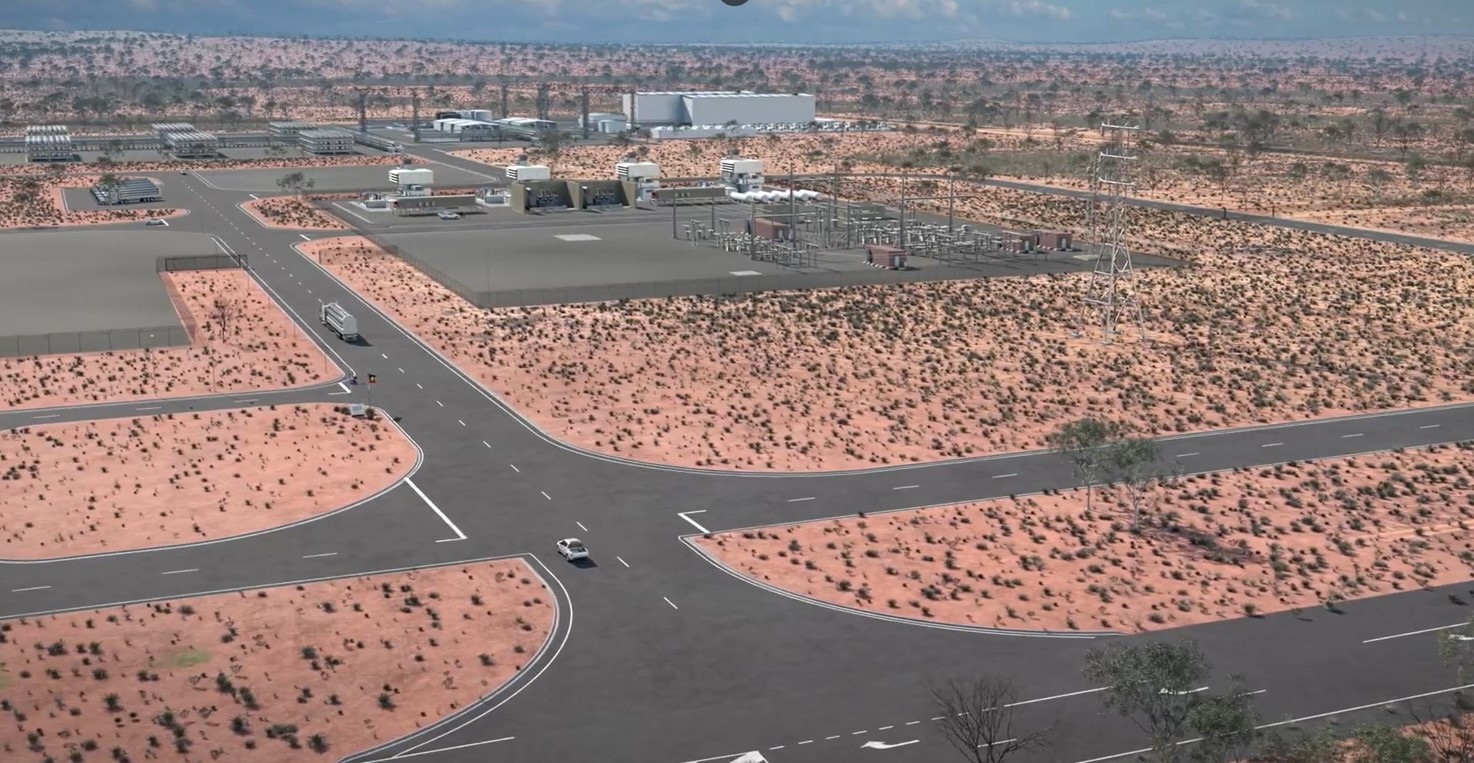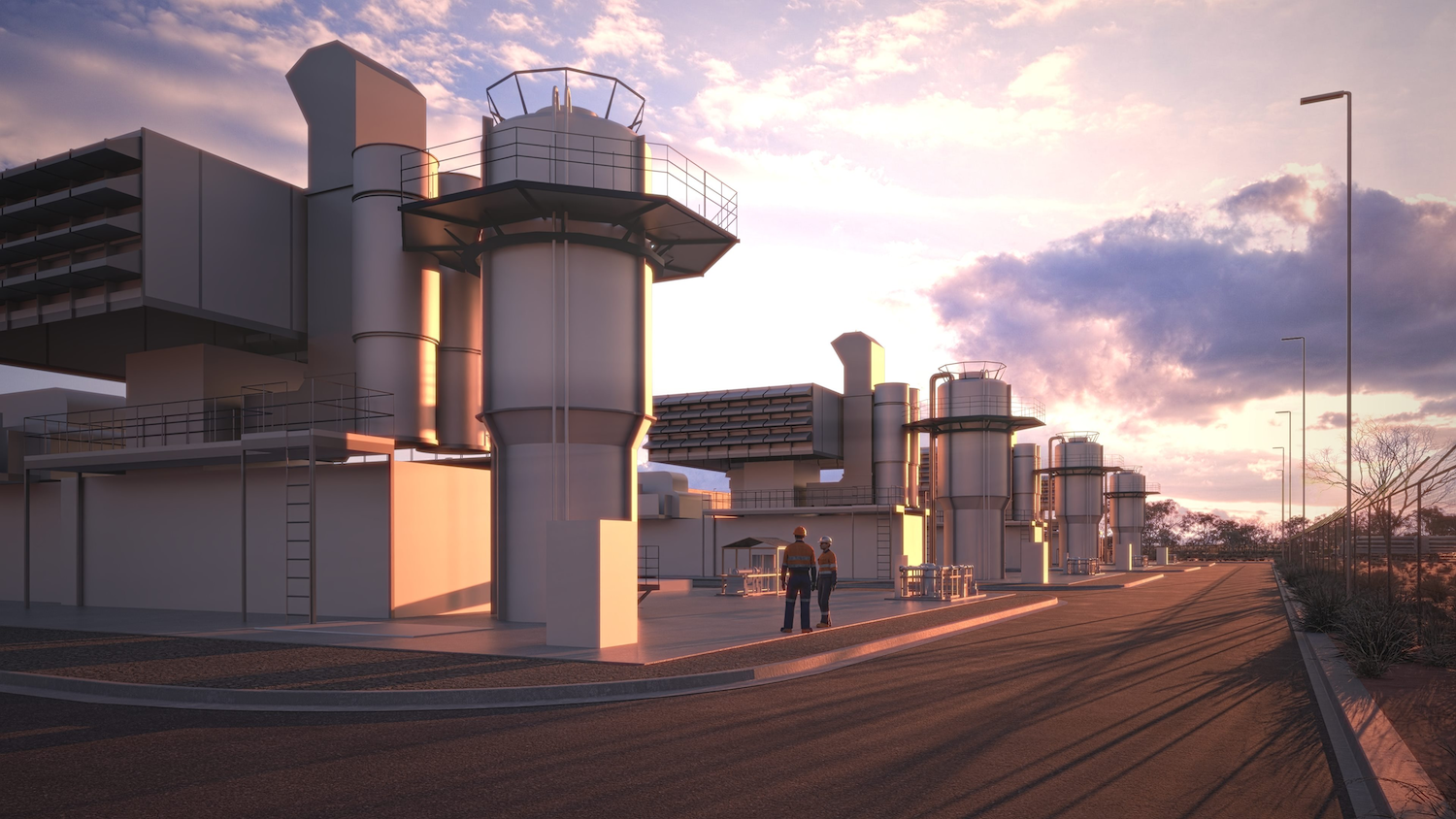When we look back on what catalyzed the hydrogen economy, we might say it all began in a small, historic steelmaking town in the state of South Australia. Here in Whyalla, at the top of the Spencer Gulf, north of Adelaide, ground will soon be broken for the construction of what is expected to be the world’s largest green hydrogen plant. (Green hydrogen is H2 made using electricity from wind and solar.) Not only will the Whyalla plant produce hydrogen using locally generated wind and solar, but it will operate using a new kind of turbine that is projected to run entirely on that greenhouse gas emissions-free hydrogen when operating.
“We are proud to unveil our first 100% hydrogen-ready aeroderivative gas turbine solution,” says Clive Nickolay, CEO of GE Vernova’s Aeroderivative business. “GE Vernova has been investing for years in R&D to advance the capabilities of its combustion systems to burn higher blends of hydrogen. Now for the first time, using green hydrogen, we can offer a solution to our customers that produces zero GHG emissions when operating. And that’s a big step forward to a net zero future.” There are very few green hydrogen power plants in the world, so the construction of this plant in Whyalla, which will produce energy for the state of South Australia, is a significant step in the right direction on the energy industry’s path to decarbonization.

As it happens, GE Vernova has more than 120 turbines worldwide that have run fully or partially on hydrogen, accumulating over 8.5 million operating hours. But a new package solution called the LM6000VELOX has now made it possible to use up to 100% hydrogen. This purpose-built package has at its core an upgraded LM6000 aeroderivative gas turbine that uses a single annular combustor (SAC) system that has been reconfigured to achieve 100%. The Whyalla facility plans to install four of these hydrogen-ready machines, rated at 50 megawatts (MW) each for a total of 200 MW. Operations are expected to begin in 2026, after construction and installation take place in 2025.
Developing a gas turbine combustion system to burn 100% hydrogen safely and reliably is a challenging engineering problem, according to Gaurav Tyagi, aero hydrogen commercialization leader at GE Vernova. “First and foremost, when we think about hydrogen there is the risk of flashback, because of how unstable the hydrogen burns,” he says. Tyagi points out that one of the key ways hydrogen differs from natural gas is that the flame speed is roughly eight times higher. So the team has spent a great deal of time testing different configurations in the Combustion Lab at GE Vernova’s Advanced Research Center in Niskayuna, New York, to address these challenges. “We’ve been on that journey over the past two years,” Tyagi says. “We’ve tested different configurations to find where we would have the highest success retiring the risks that come with burning hydrogen. And through those rig tests we have identified the right configuration that is 100% hydrogen capable and provides the maximum operability range.”
The Whyalla plant will also be important in another way: It will help reduce the use of fossil fuels in the production of steel in this region of Australia by utilizing combustible hydrogen that’s green from end to end.
Decarbonizing the industrial sector is a thorny task, but hydrogen offers a way out — if it can be produced economically and consumed safely. The state government of South Australia has chosen the LM6000VELOX aeroderivative solution to work directly in tandem with a 250-MWe electrolyzer, which will make green hydrogen from excess renewable energy generated from solar and wind during the daytime, thus maximizing renewable energy that would have otherwise been wasted. Ultimately, this arrangement plays a part in an ambitious state program called the Hydrogen Jobs Plan, which seeks to create resiliency for the local grid, support for renewables, and, of course, jobs.

When complete, Whyalla — which is being developed by a consortium made up of Canada-based ATCO and BOC Linde of Europe — is expected to be the largest hydrogen facility in the world: one that makes hydrogen, stores hydrogen, and burns hydrogen. This is a neat hat trick that will finally bring together the key, constituent parts needed to fully exploit hydrogen’s potential.
Because hydrogen is an emerging technology, governments have jumped on the bandwagon to spark its development. GE Vernova and its research arm have worked closely for years with the U.S. Department of Energy to bring hydrogen technology forward. Indeed, the Advanced Research Projects Agency (ARPA-E) has previously awarded GE Vernova funding to enhance and perfect the burning of hydrogen in combustion systems. Now those efforts appear to be paying off. It’s all part of the hydrogen value chain, one of GE Vernova’s specialties, given its deep expertise with wind turbines, solar and energy storage solutions, grid systems, and power conversion technologies. By leveraging its ability to connect these technologies in the right way, the GE Vernova team will help to fully unlock the potential of the Whyalla project.
Forward-Looking Statements
This document contains forward-looking statements — that is, statements related to future events that by their nature address matters that are, to different degrees, uncertain. These forward-looking statements often address GE Vernova’s expected future business and financial performance and financial condition, and the expected performance of its products, the impact of its services and the results they may generate or produce, and often contain words such as “expect,” “anticipate,” “intend,” “plan,” “believe,” “seek,” “see,” “will,” “would,” “estimate,” “forecast,” “target,” “preliminary,” or “range.” Forward-looking statements by their nature address matters that are, to different degrees, uncertain, such as statements about planned and potential transactions, investments or projects and their expected results and the impacts of macroeconomic and market conditions and volatility on the company’s business operations, financial results and financial position and on the global supply chain and world economy.
